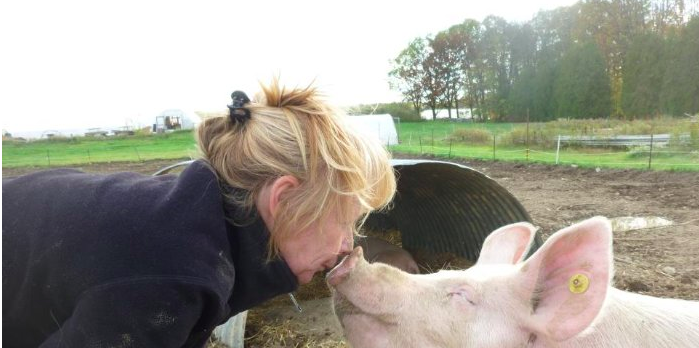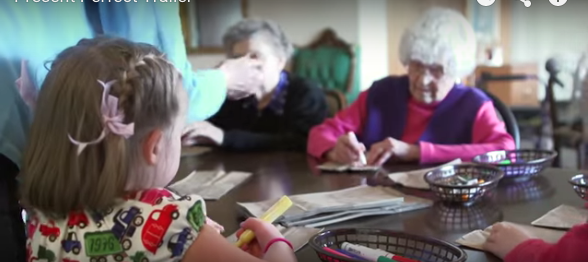For women, a gender gap persists on youth coaching sidelines

VIOREL FLORESCU/STAFF PHOTOGRAPHER, Diana Murphy is just one of the coaches in Clifton now. It wasn’t always that way, though.
BY KARA YORIO, staff writer
North Jersey News
When Diana Murphy walked into a Clifton gym a couple of years ago ready to coach basketball with a team of first- and second-grade boys and girls, the men already on the courts told her, “The girls play in the other gym.”
Murphy responded with a stunned, “Are you kidding me?” only to have the men explain they had never seen a woman coach boys before.
They’re not alone.
Stefanie El-Ansari’s appearance on the sidelines this season as Emerson Football Association’s first woman assistant coach is not so much a sign of great progress in women coaching youth sports, but its noteworthiness shows exactly how slow that progress has been. Forty-three years after Title IX legislation sought equity and fairness to women’s athletics and enabled more girls to play sports, it has not translated into more women coaches, despite a continuing narrative that it is happening in youth leagues across the country.
“The data doesn’t bear that out,” said Nicole LaVoi, director of the Tucker Center for Research on Women in Sport at the University of Minnesota. “People say that. That’s kind of a common perception — ‘Oh, we have all these girls and women who have played sports now for 30-plus years and they have all this sport knowledge and they love sport.’ ”
But that has not translated to more women coaching at any level, LaVoi said. There has not been a lot of research on the subject but based on her studies, and looking at others, she puts the number of women coaching boys teams at around 10 percent. The numbers don’t go up much when it comes to coaching girls teams, either, she said.
“I always let the data tell the story. You have less women coaching boys and girls probably than ever before and people go, ‘Really? Why is that?’ ” said LaVoi, whose book “Women in Sports Coaching” will be published next year. “Well, it’s complicated, but it really has to do about that sports is a male-dominated, male-centered social institution. It has to do a lot with power and gender.”
There has been a little progress at the highest level of athletics. The NBA has two full-time women assistant coaches in Becky Hammon and Nancy Lieberman, and the NFL’s Arizona Cardinals had Jen Welter coach during training camp and the preseason. These hirings may someday be the inspiration for a jump in women coaches at all levels. For now, though, it’s status quo, LaVoi said.
‘Tide is going to change’
Jay Shevins has coached youth teams for 20 years, boys and girls, and runs the Bergen Travel Basketball League. There are 263 boys teams in the league and six women head coaches. He doesn’t know why more women don’t coach boys.
“I really can’t tell you I know any reason why that is, but I just think dads want to get involved with their sons,” said Shevins, who has 11 women head coaches for the 86 girls teams in the league.
He believes that it’s actually the generation of women ages 25 and younger, not those Title IX 35-and-ups, who will make the difference. Those girls, he said, played more and learned more not only on school teams but with the coming of travel leagues.
“I think it’s going to be a big difference seeing them coach,” he said. “I think and I want to believe the tide is going to change.”
Not every league can give stats like Shevins. In most cases, there is no way to get definitive overall numbers across all youth leagues for one season, never mind over the years for comparison. National organizations such as Little League Baseball and Pop Warner football don’t even track the information.
Jennifer Algieri has been president of the Clifton National Little League for six years and on the board for 12. She can think of three women coaches in that time. While Algieri actively tries to get more women involved, she finds it difficult.
“They don’t have time,” Algieri said she is often told. “A lot of women work now and in addition to women working they still have to cook dinner and take their other three kids somewhere else. They can’t commit, because they have to be in 100 different places at once.”
Intimidation factor
Andy Feinberg, fall and winter soccer commissioner with Wayne PAL, has nine women coaching in his program, including two working with boys teams. “I’m very happy when anybody volunteers to coach,” he said. “The gender aspect never fazes me. I think it’s probably always been a male-dominated thing and probably will continue that way for whatever reason.”
Algieri has some ideas why.
“Intimidation,” said Algieri. “[There’s] definitely intimidation from the men — and the kids even don’t necessarily think, because she’s a girl, she knows what she’s doing.”
Karla Calder grew up in the Midwest playing volleyball, basketball, track and softball. She has coached her two sons’ basketball, baseball and soccer teams in Franklin Lakes.
While her players get over their confusion with a “mom coach” pretty quickly, others have taken longer to adjust.
“When you play other teams, other coaches introduce themselves to assistants, even the umps. It takes a while to get used to, I guess,” she said. “It’s an interesting dynamic. It’s not normal for them to see it.”
In baseball, after a controversial play, the coaches and umpire went to the third-base coach, who happened to be Calder’s husband.
“He said, ‘I’m not the coach,’ ” she said. “I guess it’s more comforting to go to the male.”
When parents took issue with her basketball strategy with third- and fourth-graders, they went to her husband, as well.
“They would go to my husband and say, ‘She’s crazy. She shouldn’t be doing man-to-man, she should be doing box-and-1.’ ”
A warm welcome
Not everyone experiences this kind of reaction. Liz Murphy coaches her son’s and daughter’s soccer teams in Ridgewood.
“I experienced absolutely no strangeness about it,” said Murphy, who coaches her 9-year-old son’s travel team and will now coach her younger daughter’s rec team as well. “Everyone was extremely warm and welcoming. I didn’t ever feel that I was treated any other way as a coach, because I was a woman and the others were men. I absolutely was always treated in the same fashion and really welcomed.”
It never occurred to Murphy not to coach because it was a boys team, she said. Other women need a little more prodding or a reason to step in. Calder only took over after her husband started traveling more for work.
Collette Mather, who lives in Teaneck, didn’t step in for her husband, but she had assumed the league director, who told her about the new travel baseball team he wanted to start with her son on it, wanted her husband to coach.
“He looked at me and said, ‘I think you’re the coach,’ ” she said. “I was flattered and excited and nervous as all get out, but I’m like, they’re 7, I can do this.”
David Rueger is the man who convinced Mather to coach. He has been involved in youth sports and coaching for 18 years and said he is proud that Teaneck is among the few area towns he sees with women coaches. He says a lack of time and confidence keeps most women from volunteering.
“I really don’t think gender matters,” he said. “People have seen women who have done it and are capable.”
Positive impact
Now that his daughter is involved in sports, Rueger said he wishes there were more women coaching girls sports, too. That definitely has a positive impact on young female athletes, LaVoi said
“[It’s] pretty clear that girls need confident, visible female role models in their lives,” she said. “A lot of female athletes go through their whole careers never having had one female coach, which is sad. Same-sex role models provide a different kind of mentoring support and advice than opposite-sex role model.
“While young boys, 100 percent of the time, get a male role model in terms of a coach, they oftentimes do not get a female role model. I think when young boys experience a female coach, it helps them see women as leaders — that women can be confident, that women can command authority and it helps change their ideas about gender and leadership as they grow into young men.”
It’s too early to know if having women coaching men on a professional level will trickle down to the youth leagues. But which would have the bigger impact — more women coaching professional men’s sports or boys’ youth teams?
“One is a top-down approach where you see women at the highest level of men’s sport, which does matter culturally,” said LaVoi. “But women coaching boys at the youth level where young minds are developing and experiences are important for identity development. Experiencing women leaders at a young age, I think, has maybe more of an impact on more boys than it does when we see women coaching at the highest level.”
Maybe coaches like the Murphys, Mather and Calder will start to have impact on the youth coaching ranks in North Jersey.
“Moms will come up to me, several moms have, and said, ‘I don’t know how you have the courage to do this. We appreciate it,’ ” Calder said. “People on the sidelines have said, ‘Oh, maybe I can do this. I never thought that I could.’ ”
Staff Writer Andrew Wyrich contributed to this article.
Email: yoriok@northjersey.com








